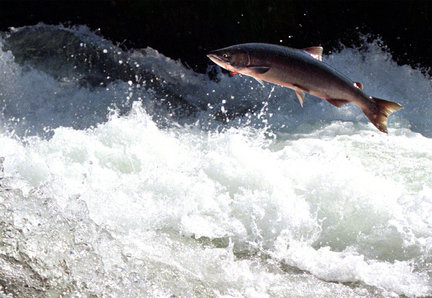forum
library
tutorial
contact

Endangered Species Act Needs Reform
by Rep. Doc HastingsCapital Press, February 20, 2014
|
the film forum library tutorial contact |

|
Endangered Species Act Needs Reformby Rep. Doc HastingsCapital Press, February 20, 2014 |
 The federal Endangered Species Act needs reform, and here's why.
The federal Endangered Species Act needs reform, and here's why.
From endangered salmon to the spotted owl, the Pacific Northwest has been the poster child when it comes to the Endangered Species Act. This is why, last year, I joined Rep. Cynthia Lummis from Wyoming and 11 of my colleagues, representing communities from across the country to launch the ESA Congressional Working Group. The purpose of this Working Group was to start an open and honest conversation about what works and what hasn't with the ESA, which just celebrated its 40th anniversary.
The intent of the Endangered Species Act was to preserve and protect key endangered species, and there is still widespread support for that goal today. However, a lot has changed in the past 40 years. I believe it's not only common sense, but the responsibility of Congress, to examine this law to see if there are ways it could be improved and updated for species and people.
Recently, the Working Group released its final report of findings and recommendations. It reflects hundreds of comments from the public, and testimony from nearly 70 witnesses that appeared before the Working Group or at House Natural Resources Committee hearings.
We found that there is still strong support for conserving endangered species, but that there are four key areas where improvements could be made to make the law more effective for species and helpful for our communities.
The first is to restore the goal of species recovery and ensure greater transparency and prioritization of ESA decisions. Today, too much focus is put on listing new species instead of recovering species and taking them off the list. The ESA only has a 2 percent recovery rate, and I believe we can do better. Instead of enforcing deadline-driven decisions or litigation -- as we saw with the recent flawed listing of the White Bluffs bladderpod in Franklin County, Wash. -- we should ensure that federal agencies take the time to work with those who live and work around these species, and who should have an active role in deciding how best to improve their recovery. A specific target for what recovery means should also be identified when the species is listed.
The second area for improvement is ESA litigation and settlement reform. The ESA today has become a tool for never-ending lawsuits that often have more to do with limiting the activity of humans than achieving recovery for plants or animals, and drain time and money away from actual recovery efforts. To enact serious reforms to the ESA, we must begin by discouraging ESA lawsuits, limiting excessive taxpayer-funded attorney fees and bringing some sunlight to closed-door settlement agreements that can result in the listing of hundreds of species.
The third area for improvement is to empower states, local governments, tribes and private property owners on ESA decisions that affect them, their citizens, and their land. The ESA Working Group heard countless stories of how state, tribes and local governments are often more successful at species conservation but are, at times, undermined by the federal government. While not perfect, the Washington State Department of Fish and Wildlife has been far more successful in working with local residents to manage wolf populations than the federal government has in the part of the our state that the species is still federally listed.
The fourth area for improvement is transparency and accountability of ESA data and science. Decision-making should be based on the best available scientific data, instead of backroom political deals or court-driven deadlines. In the case of the White Bluffs bladderpod, the federal agency failed to even take a DNA test to figure out whether the plant was genetically different than countless bladderpod plants in other parts of the country, and when an outside party provided proof that it was the same, they moved forward with the listing anyway.
There are many other specific recommendations included in our final report, which can be found at esaworkinggroup.hastings.house.gov.
It's my hope this report will further the discussion on the ESA and serve as a starting point as we move forward with commonsense legislative solutions. My intent has never been to introduce sweeping legislation to overhaul the ESA. Instead, I believe there are thoughtful, sensible, and targeted proposals that would address many of the issues highlighted in this report. I look forward to working with my colleagues on both sides of the aisle in the coming months to consider commonsense, targeted ways to improve and modernize this law for the 21st Century.
Related Pages:
Ecosystem Keystone: Salmon Support 137 Other Species by Ed Hunt, Environment News Service, July 6, 2000
learn more on topics covered in the film
see the video
read the script
learn the songs
discussion forum
